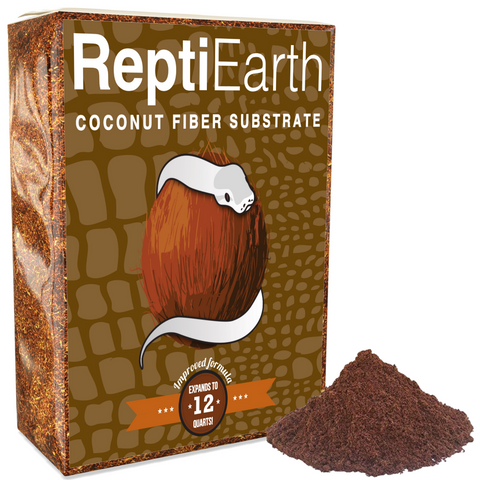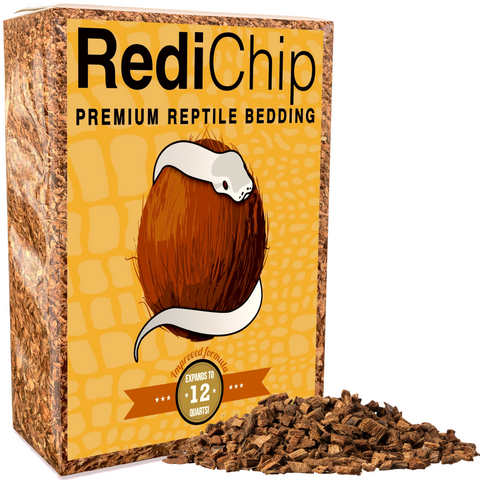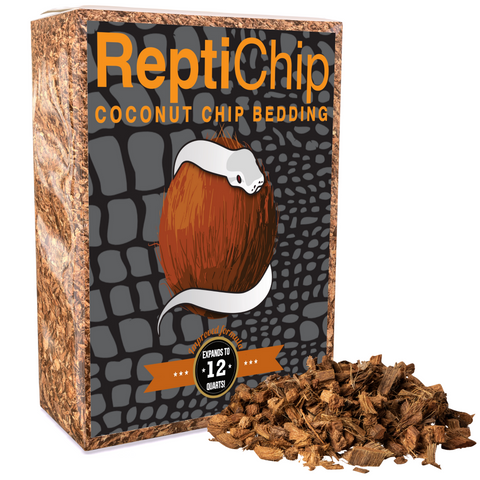Natural History
The Sumatran short-tailed python is a robust, terrestrial snake native to the dense lowland rainforests, marshes, and river floodplains of Sumatra and surrounding regions of Southeast Asia. Its life cycle begins when fertilized eggs are laid by the female, typically during the early part of the wet season when humidity levels are high. Female Sumatran short-tailed pythons lay clutches ranging from 12 to 30 eggs depending on individual size and health. Unlike many reptiles, the female exhibits a moderate degree of maternal care by coiling around the clutch throughout the incubation period, which typically lasts 55 to 70 days. During this time, the female uses muscular contractions known as “shivering thermogenesis” to generate heat and maintain optimal egg temperatures despite fluctuations in ambient conditions.
Hatchlings emerge at about 8 to 12 inches long, already displaying the species’ distinctive stout body and variable dorsal patterning, which may serve as camouflage among damp leaf litter and underbrush. These juveniles grow steadily, with most reaching sexual maturity between 2 and 5 years of age. Adult lengths usually range between 4 to 6 feet, though some individuals may exceed 6.5 feet. Growth rates are influenced by environment, feeding frequency, and genetic factors. In the wild, Sumatran short-tailed pythons are estimated to live over 20 years, although longevity in natural settings is often shorter than in captivity due to predation and environmental pressures.
Behaviorally, Sumatran short-tailed pythons are solitary and non-social outside of breeding seasons. They are primarily crepuscular to nocturnal, being most active during the early hours of dusk and into the night. Their movement is generally deliberate and slow, relying on stealth and strength rather than speed. As ambush predators, they use heat-sensing pits along their upper labial scales to detect warm-blooded prey. Common prey items include small mammals and birds, which they subdue by striking rapidly and employing constriction. Due to their sit-and-wait predatory strategy, these snakes often stay motionless for extended periods, conserving energy between meals.
Territorial behavior is minimal in this species, but individuals tend to occupy well-defined home ranges, often centered around areas rich in prey and with consistent humidity. When threatened, they may hiss loudly and posture defensively by flattening their bodies and striking with a closed mouth. Biting is rare and typically occurs only if escape routes are unavailable. Despite their muscular build and strong bite force, short-tailed pythons are not considered aggressive by nature. They are secretive and reclusive, preferring to retreat rather than confront.
Ecologically, the Sumatran short-tailed python plays a vital role in controlling populations of small mammals, including species that could become agricultural pests or disease vectors if left unchecked. By preying on rats and other rodent species, they help to maintain balance within their ecosystem. In turn, these pythons serve as prey for larger predators such as crocodiles, large birds of prey, and humans, particularly in regions where their skin is harvested or live specimens are collected for trade. Though not arboreal, they occasionally utilize low vegetation or fallen logs for cover, aided by their cryptic coloration, which includes shades of brown, black, and tan arranged in irregular blotches.
Adaptations to a warm, humid climate include excellent moisture retention via thick, keeled scales and a slow metabolism that allows efficient energy use. Their blunt tails, from which the species derives its name, may assist in both camouflage and anchoring within tight spaces. Their affinity for water bodies also supports thermoregulation and protection from larger predators, as mature individuals are proficient swimmers. Altogether, the Sumatran short-tailed python represents a critical component of Southeast Asian lowland ecosystems, regulating prey populations and contributing to the overall health and function of their native habitats.
Conservation Status
The Sumatran Short-Tailed Python is currently listed as "Least Concern" on the International Union for Conservation of Nature (IUCN) Red List. This classification indicates that, at a global scale, the species does not currently meet the criteria for a more threatened category such as Vulnerable, Endangered, or Critically Endangered. Populations are considered stable overall, and the species maintains a relatively wide geographic distribution throughout the island of Sumatra and parts of the surrounding region. However, being listed as Least Concern does not imply there are no threats; rather, it means the species is not at immediate risk of extinction across its range. Continued monitoring is essential, especially as localized populations may be vulnerable to pressure from human activity.
The primary threats to the Sumatran Short-Tailed Python in the wild include habitat destruction, unsustainable harvesting for the leather trade, and collection for the exotic pet industry. Large-scale deforestation in Sumatra—primarily from logging and the conversion of land to palm oil plantations—has significantly reduced and fragmented the species’ natural habitat. Because these pythons prefer lowland tropical forests and swamplands, their populations become increasingly isolated as suitable environments disappear. In addition to habitat loss, the species is frequently targeted by the skin trade. Due to their thick, attractive skin and manageable size, Sumatran Short-Tailed Pythons are heavily exploited for export as leather, particularly for fashion goods. Although there are regulations in place, enforcement is inconsistent, and illegal collection continues. Furthermore, poaching for the exotic animal trade, though less prevalent, has led to localized population declines, especially in areas with accessible roads and high human presence.
Conservation efforts specific to this species include regulation under the Convention on International Trade in Endangered Species of Wild Fauna and Flora (CITES), where it is listed in Appendix II. This designation allows trade but mandates strict monitoring and permits to ensure sustainability. In Indonesia, local laws require hunters and exporters to obtain licenses, and there are quotas set annually to limit overharvesting. However, enforcement of these quotas can be challenging due to lack of resources and illegal trade routes. Some protected areas and wildlife reserves, such as the Way Kambas National Park in southern Sumatra, offer safe havens for wild populations by preserving primary habitat and restricting overexploitation. These parks play a critical role in maintaining viable natural populations, especially as habitat fragmentation continues across the island.
In terms of captive breeding, the Sumatran Short-Tailed Python is well represented in the exotic pet hobby and zoological institutions. Captive breeding of this species has proven successful and contributes to reducing pressure on wild populations by decreasing the demand for wild-caught individuals. Breeding programs managed by responsible keepers and institutions also help maintain a genetically diverse captive population, which may later support reintroduction efforts or bolster genetic health if wild numbers significantly decline. Nevertheless, conservation experts emphasize that maintaining wild habitat is paramount, as long-term survival cannot rely solely on ex-situ populations. For reptile keepers, understanding these conservation issues helps promote ethical stewardship, discourage the purchase of wild-caught specimens, and support efforts aimed at preserving biodiversity in the wild.
Native Range
The Sumatran short-tailed python is native to Southeast Asia and has a relatively restricted range, being primarily confined to the island of Sumatra in Indonesia. Within Sumatra, its distribution is centered in the lowland regions and foothills, although it can occasionally be found in lower montane areas as well. Its range covers both the western and eastern parts of the island, including the provinces of Riau, Jambi, South Sumatra, and Lampung. The species' distribution overlaps with areas of both primary and secondary forest, as well as regions under increasing anthropogenic pressure such as palm oil plantations and rural agricultural zones. While the Sumatran short-tailed python is sometimes encountered in disturbed areas, it is more commonly found in relatively undisturbed habitats where environmental conditions remain stable and suitable for its ecological needs.
The primary macrohabitat of the Sumatran short-tailed python includes tropical lowland rainforests and swamp forests. These broad ecosystems are characterized by warm, humid, and densely vegetated environments with substantial canopy cover and thick undergrowth. Within these macrohabitats, the python prefers specific microhabitats that offer seclusion, high humidity, and thermal stability. Common microhabitats include areas beneath layers of decomposing leaf litter, inside abandoned burrows of other animals, at the bases of large buttress-rooted trees, under fallen logs, and within dense vegetation near water sources. It is also found in peat swamp forests, particularly in locations where water pools are present throughout the year, offering both hydration and opportunities for ambush hunting.
Climatically, this species favors consistently warm and humid environments. Average daytime temperatures in its native range typically remain between 78°F and 88°F, with minimal seasonal fluctuation. Nighttime lows rarely drop below 72°F. Relative humidity often exceeds 80%, with frequent precipitation contributing to the saturated conditions of the forest floor. Annual rainfall in its habitat commonly surpasses 100 inches, and the region experiences a distinct wet and dry season. However, even during the drier months, moisture remains high due to persistent humidity and residual rainwater. This nearly constant humidity is crucial for the physiological and behavioral functioning of the species, particularly during the shedding process.
In terms of elevation, the Sumatran short-tailed python is primarily a lowland species, most commonly found from sea level up to about 2,000 feet above sea level. While individuals have been recorded at elevations approaching 3,000 feet, such occurrences are infrequent and typically involve limited local populations. The species shows a preference for flat to gently sloping terrain, avoiding high elevations and steep montane environments that do not support its thermoregulatory needs and prey availability.
Several environmental factors are vital to the survival of the Sumatran short-tailed python. Consistent access to freshwater or moisture-saturated environments is essential, as this not only supports basic hydration needs but also ensures the presence of suitable prey species such as small mammals, birds, and amphibians. Dense ground-level vegetation and thick leaf litter layers are important for providing cover, regulating temperature and humidity at the microhabitat level, and supporting ambush predation. The species also appears to favor substrates that allow for burrowing or occupying pre-existing cavities, particularly those composed of rich organic soils with high water retention capacity. In swamp forests, floating vegetation mats and hummock islands offer critical shelter and hunting opportunities.
Overall, the Sumatran short-tailed python is a habitat-specialist species that thrives in stable, humid lowland ecosystems with ample organic cover and close proximity to water. The ongoing preservation of these environments is essential to ensuring the long-term survival of the species in the wild.
Behavior
The Sumatran Short-Tailed Python is a primarily nocturnal species, becoming most active during the hours after dusk and prior to dawn. In its native range across lowland forests, swamps, and marshy habitats of Sumatra and surrounding islands, it spends the majority of daylight hours hidden beneath logs, burrowed in leaf litter, or submerged in shallow water. Its crepuscular tendencies are sometimes observed during overcast or rainy periods when ambient temperatures drop slightly, encouraging occasional activity during daylight. Seasonal changes influence behavior, especially during the breeding season, which typically coincides with the rainy season. During this time, males become more mobile and are known to travel significant distances in search of receptive females. In cooler months, particularly when night temperatures drop below ideal thresholds, the species may exhibit brumation-like behavior, decreasing activity, feeding less frequently, and remaining concealed for extended periods.
Socially, this species is solitary and displays territorial tendencies. In the wild, individuals maintain distinct home ranges and generally avoid close contact with conspecifics outside of mating contexts. During breeding periods, males may engage in brief wrestling or shoving matches when competing for a female, but these interactions are rarely injurious. Post-copulation, there is no pair bonding, and the sexes separate swiftly. Females exhibit a rare degree of parental care among snakes; after oviposition, a female will coil tightly around her clutch and remain with the eggs through incubation, sometimes using thermogenic muscle contractions to generate heat—an unusual trait that allows her to raise egg temperatures when ambient conditions are cooler than optimal.
The species is highly sensitive to environmental cues. It uses heat-sensing labial pits along the upper jaw to detect infrared radiation from warm-blooded prey, a crucial adaptation in low-light environments. Chemoreception via the tongue and vomeronasal organ is frequently used to detect both prey and the presence of conspecifics, particularly during mating season. Sudden changes in temperature, humidity, or photoperiod can trigger changes in behavior. Elevated humidity levels, for example, often correspond with shedding cycles and increased movement. In the presence of potential predators or unfamiliar humans, the snake typically lies motionless, relying on camouflage to avoid detection. If approached too closely or handled roughly, it may hiss loudly and strike defensively. Despite its girthy body and sluggish appearance, the Sumatran Short-Tailed Python can launch rapid strikes when provoked.
One of the more notable behavioral traits of this species is its cryptic, ambush-based hunting strategy. Rather than actively pursuing prey, it often selects a concealed position along a game trail or rodent path, remaining perfectly still for hours or days until a suitable target passes within striking range. When capturing prey, the snake uses powerful constriction to immobilize mammals or birds. This species also demonstrates a remarkable ability to thermoregulate by alternating between submersion in water and basking on warm substrate, a trait less commonly observed in other short-tailed pythons.
In captivity, behavioral differences become apparent, often due to the controlled and predictable nature of artificial environments. Captive individuals are typically less wary of humans once habituated to gentle handling and may feed more aggressively due to the predictability of scheduled meals. However, stress indicators—such as frequent hiding, refusal to feed, or defensive striking—can increase when enclosures lack appropriate hiding spaces or when environmental parameters deviate from natural tolerances. Captive individuals display reduced locomotion compared to wild specimens, largely due to the limited enclosure size and absence of roaming opportunities. Enrichment, such as varied substrate textures, climbing opportunities, and water basins for soaking, can help stimulate natural behavior and reduce stress. Reproductive behaviors in captivity generally mimic those observed in the wild, particularly if seasonal photoperiods and temperatures are accurately simulated. However, females may be more prone to infertility or clutch loss if nesting conditions (such as humidity and secure egg-laying sites) are inadequate.
Overall, while the Sumatran Short-Tailed Python adapts relatively well to captivity, it thrives best under conditions that replicate the temperature cycles, humidity ranges, and environmental complexity of its natural habitat as closely as possible.
Captivity Requirements
Enclosure Design
The Sumatran Short-Tailed Python requires a secure, well-ventilated, and appropriately sized enclosure that reflects its natural humid, forest-floor environment. For juvenile specimens, an enclosure with a minimum size of 36 inches long by 18 inches wide by 18 inches high is sufficient. This allows enough space for movement while maintaining proper environmental parameters. Adult Sumatran Short-Tailed Pythons, which commonly grow between 4 and 6 feet in length, require a larger enclosure—at least 48 inches long, 24 inches wide, and 24 inches high. In some cases, exceptionally large adults may benefit from enclosures up to 72 inches long, particularly females, which tend to be more robust.
Materials for the enclosure should be chosen based on their ability to retain humidity without succumbing to mold or degradation. PVC enclosures are highly recommended due to their durability, moisture resistance, and ease of cleaning. Sealed plywood (especially when coated with a non-toxic, waterproof sealant) is also suitable if properly maintained. The enclosure must have adequate ventilation to prevent stagnant air, which can contribute to respiratory issues, but not so much that it prevents the maintenance of high humidity levels.
The interior layout should include multiple secure hiding areas, a shallow water basin large enough for soaking, and a raised basking spot. As ground-dwelling ambush predators, Sumatran Short-Tailed Pythons do not require tall enclosures or extensive vertical climbing space but benefit greatly from structured ground-level enrichment such as sturdy driftwood, tightly packed leaf litter, and heavy-duty hides. Branches or logs laid horizontally can provide some climbing opportunity, but they must be well-anchored to prevent accidents. Hides should be snug and secure on both the warm and cool ends of the enclosure to allow for thermoregulation without stress. Escape prevention is critical; these snakes are powerful and can push against doors and lids. Enclosures must have locking mechanisms or secure latches, particularly when top-opening models are used.
Lighting and Heating
Though primarily crepuscular and fossorial, Sumatran Short-Tailed Pythons benefit from exposure to UVB lighting in captivity. While not traditionally considered UVB-dependent, studies have shown that access to low-level UVB contributes to calcium metabolism and general health in many species. A 5-7% UVB linear fluorescent bulb or a low-intensity T5 HO fixture is suitable. UVB lighting should be positioned 12 to 18 inches above the basking area and should be replaced every 6 to 12 months, depending on manufacturer guidelines. Lamps must be placed outside any mesh tops to ensure proper UVB transmission, and a photoperiod of 12 hours of light and 12 hours of darkness is ideal. Seasonal variation in photoperiod can be gently simulated to reflect natural changes, especially important if breeding is intended.
Temperature gradients are essential for this species’ ability to thermoregulate. The basking area should be maintained at 86–90°F using a radiant heat panel, a ceramic heat emitter, or an overhead halogen bulb regulated by a reliable thermostat with temperature probes placed at the basking surface. Ambient temperatures throughout the enclosure should remain between 76–82°F, with the cooler end not dropping below 76°F. At night, the entire enclosure can safely drop to between 72°F and 75°F, replicating natural temperature declines. Under-no circumstance should heat rocks be used, as they pose a risk of burns. Instead, heating should come from overhead fixtures or side-mounted radiant panels, always regulated to avoid overheating.
Substrate and Enrichment
A proper substrate is critical for Sumatran Short-Tailed Pythons, both for maintaining correct humidity and encouraging natural behaviors. In the wild, these snakes are often found in lowland forest and peat swamp regions, which means the substrate needs to retain moisture without becoming soggy. ReptiChip provides a clean, durable chipped coconut husk substrate that holds humidity exceptionally well. Mixing ReptiChip with ReptiEarth—a loose, fibrous coco substrate—can further enhance moisture retention and burrowing consistency. A 3 to 4-inch substrate depth is recommended to allow for limited burrowing and comfort.
Reptile carpet must be avoided, as it neither supports humidity nor promotes natural behaviors. Additionally, it can harbor bacteria and presents sanitation challenges. Instead, naturalistic substrates such as forest floor mixes (free from perlite or synthetic materials), chipped bark, or a blend of sphagnum moss and ReptiEarth can be used in rotational zones to vary texture and encourage exploration. This species benefits from environmental enrichment cues, such as cluttered enclosure areas using cork logs, moss mounds, and tightly placed hides that replicate natural retreat sites. Adding fresh items (e.g., securely anchored wood, natural cork pieces, or leaf litter) helps stimulate the snake’s exploratory instincts. The hides must be heavy and secure to withstand the snake’s strong body moving over or under them. Rotating enrichment elements weekly can help reduce stress and encourage positive behaviors.
Humidity and Hydration
Maintaining high, stable humidity is vital to the health of Sumatran Short-Tailed Pythons. Ideal humidity levels should range between 60% and 80%, mimicking the wet lowland tropical forests of Sumatra. Achieving this level consistently requires a multi-pronged approach: using humidity-retentive substrates such as ReptiChip and ReptiEarth, partially covering the enclosure top to reduce airflow that depletes humidity, and regular manual or automated misting. Misting once daily in the evening hours is generally sufficient in a well-enclosed setup, but in dryer climates or open-top enclosures, morning and evening misting may be necessary. Including a layer of damp sphagnum moss inside or on top of hides can support shedding and help provide localized humidity boosts.
For added control, a fogger on a timer can maintain ambient moisture levels, particularly during the drier months or in homes with low ambient humidity. All humidity strategies must be fine-tuned using accurate digital hygrometers, ideally placed at both ends of the enclosure and near the substrate level to measure variances. Avoid analog hygrometers, which are often inaccurate.
Hydration should be supported by offering a large, sturdy water basin that allows the snake to soak if desired. Water should be kept clean, changed at least every 2 to 3 days, and replaced immediately if soiled. While Sumatran Short-Tailed Pythons may not frequently soak, they may drink daily from a dish or lap up water droplets from enclosure surfaces after misting. During periods of shedding, increased misting will help support hydration and promote a full, healthy shed, reducing the risk of retained eye caps or stuck skin. Monitoring hydration through skin turgor, behavior (e.g., frequent soaking or signs of dehydration), and environmental conditions ensures long-term health and welfare.
Diet & Supplementation
In the wild, the Sumatran Short-Tailed Python is a specialized carnivore with a diet that consists primarily of warm-blooded vertebrates. As a terrestrial ambush predator inhabiting the humid lowland forests, swamps, and marshes of Sumatra, it preys on a variety of small to medium-sized mammals and birds. Key prey items include rodents such as rats and shrews, ground-dwelling birds, and occasionally small reptiles or amphibians when available. Juveniles tend to focus on smaller prey such as young rodents and amphibians that are more manageable based on their size and strength, while adults graduate to larger prey, including rabbits and large rats. These snakes are non-venomous constrictors and capture prey using a sudden, powerful strike followed by coiling around the target to restrict blood flow and induce circulatory arrest, a technique known as constriction.
The Sumatran Short-Tailed Python employs a sit-and-wait or ambush strategy rather than active foraging. It relies on a combination of chemical and thermal cues to detect prey, using its forked tongue to collect scent particles and deliver them to the Jacobson’s organ in the roof of the mouth. Additionally, these pythons possess heat-sensing pits located on the upper labial scales, which allow them to detect the body heat of endothermic animals, even in complete darkness. Vision plays a secondary role but is still utilized in assessing the proximity and movement of prey. This multifaceted sensory approach ensures high hunting success rates, particularly at night when many of their prey species are active.
Seasonality can influence both prey availability and feeding frequency. In the wild, pythons may feed more heavily during the wet season when prey populations increase. During cooler or drier periods, or following reproductive events such as oviposition, feeding may become infrequent or even stop entirely for a period. Metabolic demands vary with age as well; hatchlings and juveniles require more frequent feedings relative to their body size due to their rapid growth rate, while adults typically feed less often, sometimes going weeks or months between meals depending on meal size and environmental conditions.
In captivity, the diet should closely mimic the nutritional profile of wild prey, with care taken to provide appropriately sized and nutritionally balanced meals. Commonly fed prey includes frozen-thawed domestic rodents such as mice and various sizes of rats. Adult pythons can also be offered domestic rabbits or guinea pigs on occasion, depending on their size. Hatchlings typically start on fuzzy mice or pinky rats, gradually advancing to larger prey as they grow. It is important to offer prey that is no wider than the thickest part of the snake’s body to prevent digestive issues. While whole prey items usually provide sufficient nutrition, long-term feeding of improperly raised feeder animals or exclusive diets of a single prey type can lead to deficiencies.
Feeding issues in captivity are not uncommon with this species. Food refusal can occur for several reasons, including stress, improper enclosure conditions, incorrect prey size, or seasonal breeding cycles. Additionally, obesity is a frequent problem, especially in adult pythons, due to overfeeding or inadequate opportunities for exercise. Caretakers should monitor body condition regularly and adjust feeding frequency accordingly—juveniles may require feeding every 5 to 7 days, whereas adults typically only need to eat every 2 to 4 weeks, depending on the size of the meal. Malnutrition may arise from feeding only a single type of prey or using improperly nourished feeder animals.
To promote natural feeding behaviors and reduce issues such as food refusal, keepers can incorporate environmental enrichment and feeding strategies that mimic wild conditions. This may include offering prey at night to align with the animal’s natural feeding time, simulating movement by dangling prey (using tongs and avoiding hand-feeding), and providing hiding spaces to reduce stress during digestion. Rotating prey species and alternating between rats, mice, and occasionally rabbits or birds (like quail) can enhance dietary variety and help avoid nutritional imbalance. Maintaining appropriate thermal gradients, humidity, and low-stress housing conditions also supports a healthy appetite in this species. Striking a balance between captive efficiency and ecological authenticity is key to successful long-term husbandry of the Sumatran Short-Tailed Python.
Reproduction
Sumatran Short-Tailed Pythons reach sexual maturity between two and five years of age, with females typically maturing larger and later than males. Sexual dimorphism is present but subtle in this species. Females can reach lengths of 4.5 to 6 feet and are more robust-bodied, while males generally stay within the 3.5 to 5 foot range and exhibit slimmer builds. Tail morphology is also a helpful indicator of sex, with males having longer, thinner tails due to the presence of hemipenes, whereas females have shorter, more tapering tails. In captive specimens, probing or popping techniques performed by experienced handlers or veterinarians are used to confirm sex with accuracy.
Courtship in Sumatran Short-Tailed Pythons is marked by subtle behavioral interactions. Males display increased activity during the breeding season, frequently tongue-flicking and searching for females. Upon introduction, the male initiates courtship by aligning his body along the female’s, using his spurs—vestigial limbs located near the cloaca—to stimulate her dorsally, particularly along the sides and around the base of the tail. If the female is receptive, she will remain still and lift her tail to allow copulation. Mating can last for several hours to over a day, and multiple copulations may occur over several weeks to ensure fertilization.
Environmental cues play a critical role in inducing reproductive behavior in captivity. In their native habitat, Sumatran Short-Tailed Pythons breed during the transitional period between the dry and wet seasons. To mimic these natural conditions, keepers should introduce seasonal variations in temperature and humidity. During the cooling period, day temperatures should be lowered to 80–82°F, with nighttime lows reaching 74–76°F. This cooling phase should last for approximately 6 to 8 weeks and be accompanied by a reduction in photoperiod to around 10 hours of light per day. Additionally, slightly decreasing humidity to around 60–65% during this period helps simulate dry-season conditions. Following this phase, temperature and humidity should be gradually increased—with day temperatures reaching 86–88°F and humidity rising to 70–75%—to replicate the onset of the rainy season and stimulate breeding readiness.
Sumatran Short-Tailed Pythons are oviparous, meaning they lay eggs rather than give live birth. They are solitary snakes and should only be paired temporarily for breeding, as extended cohabitation can result in stress or aggression. Introducing the male into the female’s enclosure following the cooling period is generally more successful, as females tend to be more territorial. The breeding enclosure should offer ample hiding places for both snakes and a secure, humidity-retentive substrate such as cypress mulch or ReptiChip. After copulation is confirmed, the male should be removed to prevent post-copulatory stress or conflict. Females benefit from a secluded, warm area during the gestation period leading to oviposition, where they will later coil around the clutch to brood the eggs.
Captive breeding of this species presents a number of challenges. Mate incompatibility is a common issue; some males fail to show interest, or females may reject or behave aggressively toward males. In such cases, introducing different pairings or increasing exposure to mating stimuli—such as the presence of shed skins from opposite-sex individuals—can enhance receptivity. Stress-related reproductive suppression is another concern, often due to inadequate environmental conditions, such as fluctuating temperatures, insufficient humidity, or excessive handling. To avoid these issues, the enclosure should be located in a quiet area, with minimal disturbance during the breeding season. Proper temperature cycling, photoperiod adjustment, and nutritional conditioning—ensuring both snakes are at a healthy body weight before breeding—are also essential to reproductive success. When managed correctly, breeding Sumatran Short-Tailed Pythons in captivity can be a rewarding endeavor and contributes to the long-term sustainability of this species in herpetoculture.
Incubation & Neonate Care
The Sumatran Short-Tailed Python is an oviparous species, meaning it reproduces by laying eggs rather than giving birth to live young. Reproductive activity generally follows seasonal patterns, often triggered by fluctuations in ambient temperature and photoperiod. In captive environments, breeding is typically stimulated by providing a simulated winter cooldown period, followed by rewarming and increased feeding. Once ovulation and successful copulation occur, females undergo a pre-lay shed before depositing eggs.
After oviposition, a healthy adult female will usually lay between 10 and 30 large, leathery eggs, though clutch size may vary depending on her age, size, and condition. Notably, this species exhibits maternal incubation—unlike many other pythons, female Sumatran Short-Tailed Pythons coil tightly around their eggs to provide protection and thermoregulation. In captivity, breeders often choose to remove the eggs and incubate them artificially to avoid defensive behavior and to ensure optimal developmental conditions.
The incubation process requires carefully regulated environmental parameters. Ideal incubation temperature ranges from 87°F to 90°F, maintained consistently throughout the 55 to 70-day incubation period. Higher temperatures may result in faster development but increase the risk of deformities or embryo mortality, while lower temperatures may prolong incubation and reduce hatch rates. Humidity levels should be maintained between 90% and 95% to prevent the leathery egg shells from desiccating. A suitable substrate for artificial incubation includes a damp mixture of vermiculite or perlite with a 1:1 water-to-substrate weight ratio to ensure adequate moisture retention without water pooling, as excess moisture can lead to drowning or mold growth. While there is no documented evidence of temperature-dependent sex determination in this species, maintaining a stable incubation environment is crucial for optimal hatching success.
Hatching is typically synchronous, with most neonates emerging within several hours of one another. As they reach full term, the embryos begin to internally slice through the eggshell using their egg tooth, creating a small slit to emerge. Neonates often remain partially in the egg for hours or even a day as they complete yolk absorption. Human intervention should be avoided unless there are signs of distress or unhatched eggs several days after the initial pipping. Risk factors for unsuccessful hatching include improper incubation temperature or humidity, infection, or genetic abnormalities. Egg binding may also occur in adult females, especially if hydration or husbandry is inadequate, requiring veterinary intervention.
Once hatched, neonates should be separated from both the eggs and any adults, as cannibalism is unlikely but possible under certain conditions, and adult snakes may become stressed by the presence of hatchlings. Neonates should be placed into individual or small-group enclosures lined with damp paper towels for ease of cleaning and humidity control. A secure enclosure measuring around 24 inches by 18 inches is sufficient at this stage. Ambient temperatures should be maintained between 78°F and 84°F, with a basking site reaching 86°F to 88°F and a nighttime drop no lower than 78°F. Humidity should be kept between 70% and 80%, which supports proper shedding and respiratory health.
Neonates usually complete their first shed within 7 to 10 days after hatching. Feeding attempts should be made only after the first shed is completed to ensure proper digestive function. A suitable first meal is a properly sized thawed-and-warmed rodent, typically a pinkie or fuzzy mouse depending on the hatchling’s size. Feeding intervals should be every 5 to 7 days, and uneaten food should be removed after 12 hours. Newly hatched Sumatran Short-Tailed Pythons may be reluctant feeders, so careful observation and minimal handling are advised to reduce stress. Proper hydration is essential and can be supported through lightly misting the enclosure and offering a shallow water dish.
Common health concerns in neonates include retained shed, dehydration, respiratory infections, and anorexia. Avoid overhandling young snakes—frequent interaction can lead to feeding refusal or defensive behavior. Monitoring weight gain and behavior is key to ensuring proper development. By replicating the temperature, humidity, and enclosure conditions appropriate for this species, keepers can successfully rear healthy neonates through their early stages of growth.
Conclusion
The successful care and long-term health of the Sumatran Short-Tailed Python in captivity rely on a comprehensive understanding of the species’ natural history, environmental requirements, and behavioral patterns. This snake’s lifecycle—from egg-laying and maternal incubation to its role as a powerful ambush predator—reflects a series of highly specialized adaptations to the humid, lowland ecosystems of Sumatra. Replicating these conditions in captivity through appropriate enclosure design, temperature and humidity gradients, and substrate choice is essential to promote physical health, behavioral enrichment, and overall well-being.
As a terrestrial, humidity-dependent species, this python thrives in enclosures that prioritize horizontal space, moisture-retentive substrates, and secure, secluded hiding opportunities. Its sensitivity to environmental cues for feeding, shedding, and reproduction underscores the importance of maintaining consistent thermal and hydration levels. The species’ primarily nocturnal activity and cryptic hunting behavior highlight the value of structured enclosure enrichment and adherence to natural light cycles.
Captive breeding of the Sumatran Short-Tailed Python not only supports its sustainability within herpetoculture, but also contributes to conservation by reducing demand for wild-caught individuals. Nevertheless, habitat preservation in its native range remains critical, as ongoing deforestation and trade pressures continue to impact wild populations. Ethical keeping practices—including sourcing captive-bred individuals and advocating for habitat conservation—are imperative for responsible reptile stewardship.
For keepers committed to replicating authentic conditions and understanding the biological needs of their animals, the Sumatran Short-Tailed Python can be a rewarding, robust species that thrives in captivity. With proper care, this secretive yet striking snake may live two decades or more, offering captivating insight into the ecology of Southeast Asia’s forest floor.





























